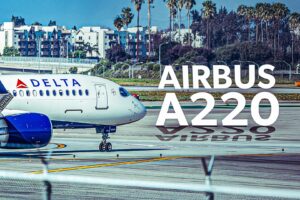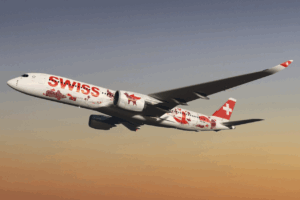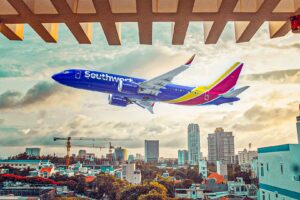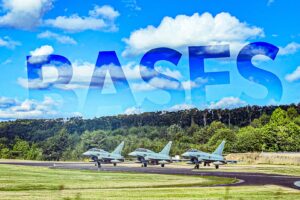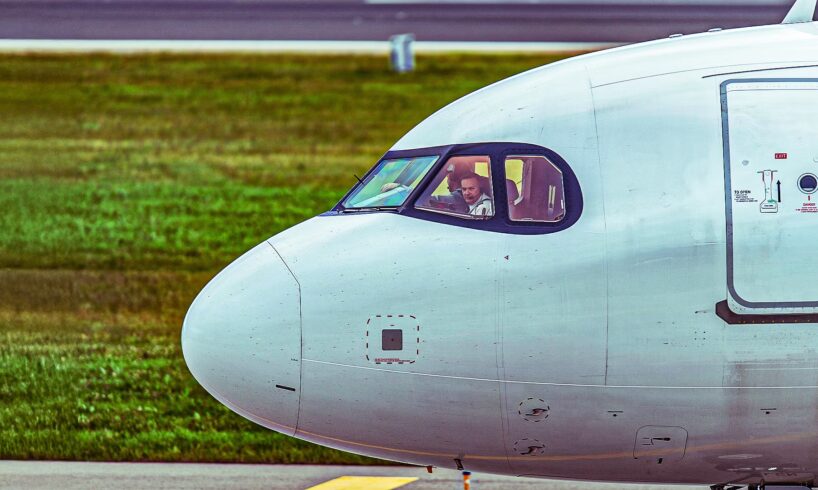
One of the most iconic aviation terms that has also become a household word is “Roger.” The word comes from early radio transmissions and the US Army Signal Corps just before the outbreak of WWI. The word persisted through the interwar period and was also adopted by the US Navy. The word rose to fame in WWII and the many subsequent movies about air battles of the conflict. As the British and US deepened their cooperation with each other during WWII, the word was soon adopted by the RAF.
Previously, the RAF’s counterpart was “Robert” or “Robertson,” which had a rather different ring. However, even being adopted by the RAF did not enable “Roger” to survive in the phonetic alphabet in the long run after WWII, as it was supplanted by “Romeo.” Still, pilots continue to use the word, though not in its original phonetic alphabet usage. Here is what to know about the history and meaning of “Roger,” and why it was dropped by the US Air Force, US Navy, RAF, and ICAO.
Origin Of “Roger”
Credit: Shutterstock
In the days of Morse Code, as well as the early days of radio communication, the letter “R” was the shorthand for “Received.” As radios started to replace Morse Code, the audio quality was frequently crackly and poor. It was easy to mishear and therefore misunderstand people. The phonetic alphabet was developed to ensure letters could be easily distinguishable over a noisy radio.
In this early period, the phonetic alphabet pronunciation of “R” was “Roger.” This was later replaced in the NATO Phonetic Alphabet made popular by Hollywood movies with “Romeo.” Other phonetic pronunciations or suggestions for the letter “R” by various organizations before standardization have included Rome, Rivoli, Roma, Robert, and Rosa. But while the phonetic alphabet changed with “Roger” being replaced by “Romeo”, the word stuck in aviation.
The word “yes” is a single-syllable word that could easily be mistaken for other words or otherwise lost in transmission, especially with the radios of the 1920s. It was necessary to use a clear, two-syllable word. In other words, “yes” was not a suitable word to use, and “Roger” was the way to say “Received.” Additionally, “Roger” does not mean “yes.” In aviation speak, “yes” is “Affirmative.”
What “Roger” Means
Credit: Shutterstock
As stated, the word “Roger” stands for the word “Received.” It means “I received and understood your last transmission.” What it doesn’t mean is any intent of the pilot to carry out any instructions in that last transmission, only that the pilot understands. The word remains part of the aviation and radio tradition alongside other well-known words like “Mayday.”
The word that signifies the pilot will carry out instructions is “Wilco,” standing for “Will comply [with your instructions].” In aviation talk, the word replacing “yes” is “affirmative”, while the word standing in for “no” is “negative.” These words are used by civil pilots, military personnel, and even spacecraft crews and shipping. They benefit from being unambiguous and internationally understood.
History of “Roger”
1913
Used by US Army Signal Corps
1927
Adopted into joint US Army/US Navy phonetic alphabet
1941
Adopted for all US Armed Forces
1943
Adopted by Allied Forces (including RAF)
1951
Adopted by ICAO “Able Baker”
1956
Replaced by “Romeo” universally by NATO/ICAO
In the RAF, the expression “Roger Wilco” stands for “Received, will cooperate” and is used to acknowledge a request or order. A popular online explanation that “Roger” stands for “Received Order Given, Expect Results” was popularized by David Goggins. Goggins is a motivational speaker and former Navy SEAL. It’s unclear where this belief originated or where Goggins got his information from.
A Confusing Array Of Phonetic Alphabets
Credit: US Air Force
During WWI, the British and American militaries independently developed phonetic alphabets, while other organizations developed their own systems. The 1927 US Army/Navy Radiotelephony Alphabet was Able, Baker, Charlie, Dog, Easy, Fox, George, How, Item, Jig, King, Love, Mike, Nan, Oboe, Peter, Queen, Roger, Sugar, Tare, Uncle, Victor, William, Yoke, and Zebra. This is just one of multiple experimental and service-specific phonetic alphabets developed around that time. Not only were these phonetic alphabets changing, but the US Army Signal Corps had a different one from the Royal Air Force and the ITU.
The phonetic alphabet continued to evolve, and in 1927 the International Telecommunication Union (ITU) standardized the phonetic alphabet to better accommodate international communication. This alphabet used the names of cities around the world. The alphabet was Amsterdam, Baltimore, Casablanca, Denmark, Edison, Florida, Gallipoli, Havana, Italia, Jerusalem, Kilogramme, Liverpool, Madagascar, New York, Oslo, Paris, Quebec, Roma, Santiago, Tripoli, Uppsala, Valencia, Washington, Xanthippe, Yokohama, Zurich.
Select historical phonetic words for “R”
User/s
Rush, Ross, Robert/Robertson
RAF, Royal Navy, British Army
Rivoli
International Radiotelegraph Convention
Roma
International Telegraph Union
Rosa
1947 ICAO Latin America/Caribbean
Romeo
Universal from 1956
Something had to be done. One important aspect of standardization is not only what words English speakers feel comfortable with, but also what words can be pronounced by foreigners. It was decided that a new spelling alphabet needed to be established, with each word being a live word in the world’s three main working languages at the time, and having a similar spelling in English, French, and Spanish. Words needed to be easily pronounced and recognized by airmen across all languages and should not carry any negative association.
Superseded By The NATO Phonetic Alphabet
Credit: US Air Force
In 1947, the International Civil Aviation Organization (ICAO) started work on a single, universal phonetic alphabet common to civil and military aviation. The aim was to replace and improve on the motley collection of phonetic alphabets that existed at that time, including the US’s “Able Baker” and the RAF’s “Ack Beer.” The first ICAO alphabet was introduced in 1951 and started “Alfa, Bravo, Coca” but was met with criticism.
The alphabet was revised in 1956 after more extensive testing using 200,000 voice transmissions and understanding studies with other languages. This was the final version, and it lacked “Roger.” NATO adopted the alphabet in 1956, superseding all other alphabets across its member militaries for joint operations.
The system became the standard globally for civil aviation, maritime, and military communication in most countries. It is used in air traffic control, flight crew communications, and airline operations centers. Its usage is stipulated in ICAO Annex 10 (Aeronautical Telecommunications).
Other Example ICAO Standardizations
Credit: Shutterstock
This standardization extends to numbers. These are pronounced ZE-Ro, WUN, TOO, TREE, FOW-er, FIFE, SIX, SEV-en, AIT, and NIN-er. The word “thousand” is to be pronounced TOU-SAND. The “th” sounds in three and thousand are eliminated, as it is a very difficult sound for many non-English speakers to pronounce. Meanwhile, five is FIFE to avoid confusion with the word “fire.”
Other specific words used in aviation include Over, Out, Stand Down, Line Up and Wait, Correction, Say Again, Standby, and Pan-Pan. Whereas Mayday is a distress call signaling grave and imminent danger and in need of assistance, Pan-Pan is an urgent signal indicating an urgent situation, but that it is not an immediate danger to life. While most aviation words are English, these two are French. Mayday is from the French “m’aidez” meaning “help me” and was first introduced by Frederick Mockford for the radiotelephony at Great Britain’s early Croydon Airport in 1923.
Pan-Pan is derived from the French word “panne,” which means breakdown. Aviation language continues to evolve and improve. For example, the phrase “Line Up and Wait” was officially introduced into ICAO phraseology in 2010 to replace the more ambiguous command “Position and Hold.” The importance of standardizing clear and unambiguous language was painfully brought home in 1977 with the Tenerife airport disaster. That incident saw the collision of two Boeing 747 Jumbos and the loss of 583 lives. The incident was partly blamed on a pilot mistakenly believing he had been given takeoff clearance.
“Roger” Lasted From WWI To The Early Cold War
Credit: Shutterstock
In short, the word “Roger” is a reminder of how much aviation language has changed over the years. It hails from a time when there were several competing phonetic alphabets, with these alphabets often in a state of relative flux. Not only were the military and civil phonetic alphabets different, but so too were those between the British Empire and the American military. This was worse still, with the same military potentially having competing phonetic alphabets.
One of the first recorded uses of “Roger” for “R” came in 1913 with the US Army Signal Corps. With the US military, an early step toward standardization came in 1927 when the US Army and US Navy produced a joint radiotelephone alphabet. During WWII, the US and allied RAF finally standardized their phonetic alphabets, laying the groundwork for the modern NATO standard phonetic alphabet.
That early Signal Corps phonetic alphabet lasted until 1927, when it was replaced by the 1927 US Army-Navy Radiotelephony Alphabet. That alphabet was briefly replaced by the 1941-1943 Able Baker Alphabet, which retained “Roger.” Roger was again retained in the Combined Allied Forces Able Baker Alphabet from 1943 to 1956. Finally, Roger made the initial cut in the ICAO 1st International Radiotelephony Alphabet (1946-1951). However, it was replaced in 1951 and was permanently replaced by “Romeo” in 1956.


